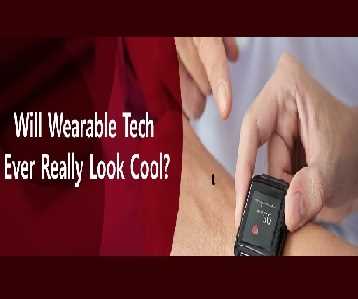It’s really unfortunate wearable technology can perform really advance functions but cannot be comfortable and stylish; it can simply not fulfill both purposes together, at least as yet. Wearable tech has been lambasted for its poor taste in fashion; even the least fashion-conscious individual often finds these wearables too bulky and conspicuous. So far, very few gadgets have managed to overcome the gap between design and functionality. A couple of those successful ones are Apple’s smartwatch and Vue smart glasses. Apple and Vue have cleverly developed versatile, sleek and functional designs that can fit in with modern fashion too.
Will they be as popular as smartphones?
In truth, wearable tech doesn’t hold as much value for consumers as smartphones. Something new and shiny is released, consumers buy it, but eventually, the novelty wears off and since no real value is experienced, they abandon the product and move on.
Fitness Wearables like wristbands collect data, monitor heart-rate, track movements, and sleep patterns, etc. But what should a user do with this data? To provide riveting user experience, wearable tech needs to be more relevant to users implying clever interpretation of data.
Also, these high tech wearables are pricier than your average clothing and smartphone. Many people would like to have them, but affordability always gets in the way.
Lastly, wearable tech faces many design issues, both in look and feel. These wearable gadgets are simply not compatible with seamless user experience; great design is vital for wearables since users psychologically equates it to their clothing, rather than their smartphones or tablets.
Design rules for Wearable tech
Makers need to ensure wearable tech is not a fashion victim and functional in its design too if they want it to make headway into mass popularity like smartphones. Here are a few things they must consider to that end:
1. Versatility: Works with Everything
Incorporate versatility in its design so wearable tech doesn’t look out of place in our everyday attire. Not everyone wants to look like they have stepped out of the Marvel’s universe.
2. Battery Life: Saves Lives
Most wearable devices’ battery lasts for a couple of days, while users expect them to last for a few months at least. Users have higher and divergent expectations of such wearables as compared to smartphones. They don’t want the hassle of charging something they wear regularly. They would like their smartwatch to be sustainable as a regular watch, but with augmented features. Since really small batteries are used in wearables, battery life is going to be awfully limited. Until we develop tiny batteries with longer life, wearables could employ power management techniques to help the processors perform as efficiently as possible.
3. Minimalism: Never goes out of style
Users want to easily comprehend the readings on-the-go. Wearable tech usually comes with teeny-tiny screens; designers should, therefore, ensure the contrast, space, and typography are minimalistic and uncomplicated so as to enable convenient interaction with the device.
4. Customization: Interruptions irritate
It’s one thing for a smartphone to buzz with notifications, but it’s entirely different when you receive an alert from something you wear. Wearables feel much more distracting when that happens e.g. if they’re smart spectacles, a deluge of notifications right in front of your eyes is going to put you off.
Users should have the option to customize and receive notifications as and when they prefer. But on a standard-setting too, the information should be carefully filtered according to what must be displayed in the notifications.
5. Offline Reliability
Wearables shouldn’t turn useless when they lose internet connectivity. Offline usage should be integrated into wearables, so the device remains reliable during inopportune times too. While offline backup may not be possible, you can certainly ensure a more seamless experience while online, if you benefit from AT&T U-verse connectivity. That may, in fact, be the best way to go.
6. Think Like a User
The most crucial aspect of wearable tech is the user experience. While designing, makers need to think like a user. They must question themselves: Will one feel comfortable while wearing it? Does it feel clunky or bothersome? Grabs unwanted attention in public? Is the interface seamless? Does it interact with other devices?
All these questions and more must be answered to ensure users get the most value out of their experience.
7. Price: Often the Decision-Maker
Though it’s not a design rule, it plays an important role in a consumer’s purchase decision. There are very few wearables on the market, which fulfill everything a user wants, but they’re way too pricey. For wearables to penetrate the market like smartphones, a three-tier pricing model needs to be adopted.
Wearables are our future, but the wearables market is still evolving and there are plenty of improvements awaited in this arena of modern tech. Consider this a teenage phase, they feel way too awkward, geeky, unprepossessing; but eventually, they’re going to be something really cool and elegant, everyone would want to wear. Some even believe, for wearables to be successful they need to vanish, be embedded in clothing and accessories so they are not as obvious. What works is however entirely contingent on the users’ preferences, which are and will always be varied.




Leave Comment